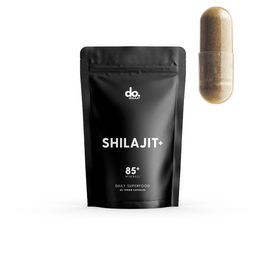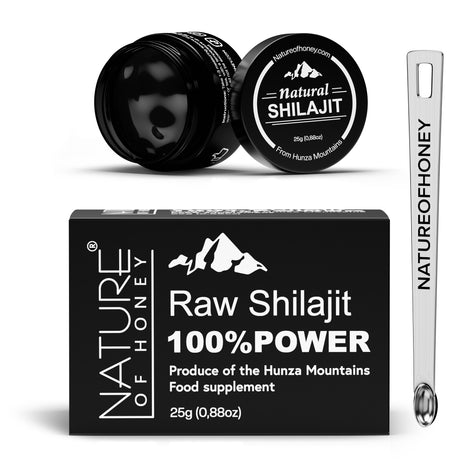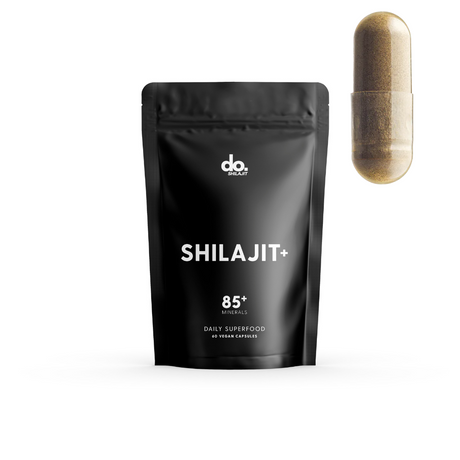The Therapeutic Potential Of Fulvic Acid For Chronic Inflammation And Diabetes
Have you ever wondered if Mother Nature has hidden elixirs for some of today’s most pressing health concerns? Imagine unearthing a time-tested treasure that has the potential to revolutionize the way we address chronic inflammatory diseases and diabetes. Well, the secret might just lie in a miraculous substance found in Shilajit – Fulvic Acid.
In our previous articles, we delved into the awe-inspiring properties of Fulvic Acid for plants. It’s like the ultimate booster for your garden, but guess what? That’s just scratching the surface! The potential benefits of Fulvic Acid extend far beyond your backyard. Today, we’re taking a deep dive into the realm of human health. We’re about to uncover the game-changing possibilities that Fulvic Acid holds for battling chronic inflammation and managing diabetes.
For the uninitiated, Shilajit is a sticky, tar-like substance found in the Altai mountains, and it’s been revered in traditional medicine for centuries. One of its most potent components is Fulvic Acid, a powerhouse compound packed with nutrients and minerals.

Fulvic Acid: Beyond The Garden
As the rates of chronic inflammatory diseases and diabetes soar worldwide, it’s time to look towards holistic solutions. With Fulvic Acid’s promising attributes, we might just be on the brink of a new era in natural therapeutics.
Join us as we unfold the science, studies, and stories behind Fulvic Acid’s incredible potential. Whether you’re searching for alternative health options, or just curious about the wonders of nature, this journey is for you.
Let’s get started!
What Is Fulvic Acid
As we embark on this enlightening journey, let’s first unravel what Fulvic Acid is. Think of it as a miraculous substance derived from ancient plant matter. Over millions of years, these plants have decomposed and been compressed under immense geological pressure to form a rich, potent material – Shilajit. Among the plethora of beneficial compounds in Shilajit, Fulvic Acid stands out as a true gem.
Origin And Composition
Fulvic Acid is a humic substance, which means it is one of the primary components of organic matter found in rich, fertile soil and in certain rocks like Shilajit. It’s comprised of an abundance of minerals, amino acids, and trace elements. What makes Fulvic Acid so exceptional is its ability to bind to these minerals and other molecules and transport them into living cells.
The wonders of Shilajit and Fulvic Acid have not gone unnoticed in the annals of history. Traditional medicine systems such as Ayurveda and Traditional Chinese Medicine have revered Shilajit for its rejuvenating properties for centuries. In Ayurveda, it is often referred to as the “Conqueror of Mountains” and the “Destroyer of Weakness.”
Modern Recogniton
In recent times, Fulvic Acid has garnered attention from the scientific community. Modern studies have started to investigate its properties and potential applications, particularly in human health. This renewed interest stems from its unique chemical structure, which is believed to have a plethora of health benefits.
As we delve deeper into the potential of Fulvic Acid in managing chronic inflammatory diseases and diabetes, it is essential to understand its roots and the rich heritage that has recognized its value through the ages.
Stay with us as we explore how this ancient wonder could become a cornerstone in modern, holistic health care.
Chronic Inflammatory Diseases: A Growing Concern
Before diving into the magic that Fulvic Acid may wield against chronic inflammatory diseases, let’s set the stage by understanding the magnitude of the issue we face.
About Chronic Inflammation
Chronic inflammatory diseases are conditions characterized by prolonged inflammation that can last for several months or even years. Inflammation is a natural response of the body to harmful stimuli, such as pathogens or damaged cells. However, when inflammation becomes chronic, it can detrimentally affect tissues and organs, causing a host of health problems.
The Rising Tide
From rheumatoid arthritis and inflammatory bowel diseases to asthma and allergies, chronic inflammatory diseases are varied and increasingly prevalent. According to the World Health Organization, these diseases are among the leading causes of death globally. The modern lifestyle, characterized by stress, poor diet, and environmental factors, has been cited as a contributing factor to the rising incidence.
The Many Faces Of Chronic Inflammation
Chronic inflammatory diseases take many forms:
- Rheumatoid arthritis
- Inflammatory bowel diseases (such as Crohn’s Disease and Ulcerative Colitis)
- Psoriasis
- Asthma
- Chronic obstructive pulmonary disease (COPD)
- Allergies
These diseases not only take a toll on the affected individuals but also pose a significant burden on healthcare systems.

As the prevalence of chronic inflammatory diseases continues to rise, there is an urgent need for innovative and holistic treatment approaches. This is where natural sub
With this backdrop, we can now appreciate the potential role that Fulvic Acid might play in offering a natural, holistic approach to tackling chronic inflammatory diseases. In the next section, we will explore how this potent component of Shilajit can be a ray of hope in managing these debilitating conditions.
Fulvic Acid And Its Potential Benefits In Combating Oxidative Stress And Diabetes
Oxidative stress is a condition where the body experiences an imbalance between reactive oxygen species (ROS), which are harmful molecules, and antioxidants that combat these molecules. The accumulation of ROS leads to cellular damage, affecting various biological components such as lipids and proteins. This imbalance is often associated with chronic inflammatory diseases and other health conditions.
Fulvic Acid (FvA) has been identified as a substance with promising antioxidant capabilities. FvA is known to neutralize superoxide radicals and other reactive oxygen species (ROS), which are molecules that can cause harm to cells. This happens both outside and within the cell. Inside the cell, Fulvic Acid can interfere with the electron transport chain in mitochondria, a process which is linked to reducing ROS production.
Additionally, Fulvic Acid has been shown to effectively reduce oxidative stress markers and increase the levels of endogenous antioxidants such as glutathione (GSH), superoxide dismutase (SOD), and catalase (CAT). These antioxidants are critical in protecting the cell from oxidative damage.
Fulvic Acid’s Potential Role In Diabetes Management
Type 2 Diabetes Mellitus (T2DM) is a chronic condition characterized by the body’s inability to effectively use insulin, leading to high blood sugar levels. This condition is often associated with oxidative stress and inflammation.
In the context of diabetes, inflammation is a double-edged sword. Chronic low-grade inflammation is implicated in the development of insulin resistance, yet the immune response is necessary for wound healing and fighting infections, which are common complications in diabetes.
Fulvic Acid has demonstrated the potential to mitigate inflammation by reducing proinflammatory markers. This is particularly relevant for T2DM, where patients often have elevated levels of proinflammatory cytokines in their blood.

Furthermore, oxidative stress plays a significant role in the progression of T2DM. As mentioned earlier, Fulvic Acid exhibits antioxidant properties that can potentially protect cells from oxidative damage, which is common in diabetes.
Another intriguing aspect is the potential effect of Fulvic Acid on gut health. The gut is integral to overall health and has been linked to inflammation and various diseases. There is some evidence to suggest that Fulvic Acid may have a positive influence on gut flora, which in turn could have implications in managing diabetes.
Moving Forward With Fulvic Acid Research
In conclusion, Fulvic acid is a promising natural substance with the potential to contribute positively to human health. As we have discussed its anti-inflammatory, antioxidant properties, and the potential roles in gut health and diabetes management, it’s clear that Fulvic acid deserves further exploration and research. We encourage healthcare professionals, researchers, and stakeholders to invest time and resources in understanding Fulvic acid better.
This can pave the way for new treatment avenues, especially for chronic conditions. Moreover, as individuals seeking to maintain and improve health, it’s essential to stay informed and open to emerging research regarding Fulvic acid and its possible applications in promoting wellness.
Our sources and more info below.
 SHILAJIT PREMIUM
SHILAJIT PREMIUM
 SHILAJIT PREMIUM CAPSULES
SHILAJIT PREMIUM CAPSULES
 SHILAJIT PREMIUM
SHILAJIT PREMIUM
 SHILAJIT PREMIUM CAPSULES
SHILAJIT PREMIUM CAPSULES